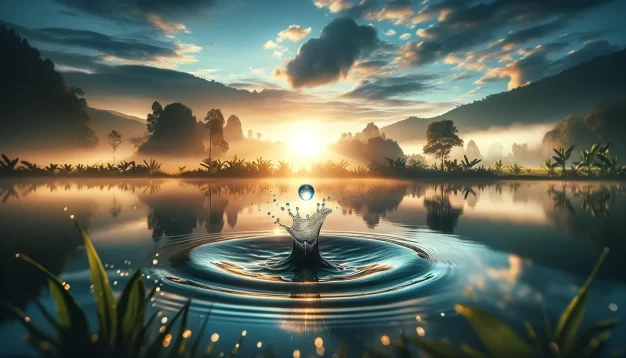High-Speed Photography
Unlock the secrets to freeze motion in shots with our high-speed photography guide.

Introduction to High-Speed Photography
High-speed photography is the art of capturing images that occur in a fraction of a second and are often invisible to the naked eye. It’s a way to freeze time, to record moments that would otherwise be lost forever. From a balloon popping to the intricate dance of a drop of water, these fleeting moments are immortalized through the camera lens.
Understanding Shutter Speed
The Role of Shutter Speed in Freezing Motion
Shutter speed is crucial in high-speed photography. It determines the length of time the camera’s sensor is exposed to light. To freeze motion, you need a fast shutter speed, typically ranging from 1/500th to 1/8000th of a second, depending on the velocity of the subject.
Shutter Speed vs. Motion Blur
Slow shutter speeds create motion blur, conveying movement in a still image. Fast shutter speeds, on the other hand, freeze action. The trick lies in finding the sweet spot that captures the essence of the moving subject without blurring.
Essential Equipment for High-Speed Photography
Choosing the Right Camera
A DSLR or mirrorless camera with a high frame rate and fast autofocus system is optimal. These cameras offer the manual controls and speed required to master high-speed photography.
Lenses for Crisp High-Speed Shots
Sharp, fast lenses with wide apertures allow for quicker shutter speeds. Prime lenses are often favored for their superior sharpness and larger maximum apertures.
Tripods and Remote Triggers
A sturdy tripod eliminates camera shake, ensuring sharp images. Remote triggers, including wireless systems, allow photographers to capture the action without physically touching the camera, reducing the chance of vibration.
Camera Settings for High-Speed Shots
Manual Mode for Full Control
Manual mode hands the reins over to the photographer, providing full control over exposure settings. It’s indispensable for adjusting the camera to rapidly changing conditions in high-speed scenarios.
ISO, Aperture, and Shutter Speed Balance
Achieving the perfect exposure in high-speed photography is a balancing act. A higher ISO can compensate for a fast shutter speed, but watch out for increased noise. The aperture affects depth of field and exposure; a wider aperture allows for faster shutter speeds.
Autofocus vs. Manual Focus
Autofocus can be a boon when tracking fast-moving subjects. However, for predictable motions or when dealing with extremely brief moments, pre-focusing manually ensures the camera doesn’t hunt for focus at the crucial instant.
Lighting for High-Speed Photography
Flash and Continuous Lighting Solutions
A flash unit with a short flash duration can freeze motion effectively, acting as a substitute for shutter speed. Continuous lighting should be bright and flicker-free to maintain a consistent exposure.
Balancing Natural and Artificial Light
Combining natural light with artificial sources can yield dynamic results. However, artificial light is usually more controllable and thus often preferred in high-speed photography.
Composing High-Speed Images
The Importance of Background and Framing
Backgrounds should be uncluttered and complement the subject. Framing is critical; provide enough space to anticipate the subject’s movement within the frame.
Using Motion to Tell a Story
Motion can convey emotion or tell a story. Capture the trajectory of movement in the composition to lead the viewer’s eye and create a narrative.
Post-Processing High-Speed Photos
Editing Software and Techniques
Use editing software to fine-tune exposure, crop for better composition, and enhance colors. Be judicious; the goal is to enhance, not overpower the original shot.
Sharpening Images and Reducing Noise
Apply sharpening to bring out details, and use noise reduction sparingly to maintain image quality. These tools are essential for polishing high-speed photographs to a professional standard.
Conclusion and Practice Tips
High-speed photography is both a science and an art. It rewards patience, precision, and experimentation. Keep pushing the boundaries of your equipment and creativity. And remember, even the most calculated setup can lead to serendipitous results that surpass all expectations. So go ahead, freeze the unfreezable, and may your reflexes be as fast as your shutter.